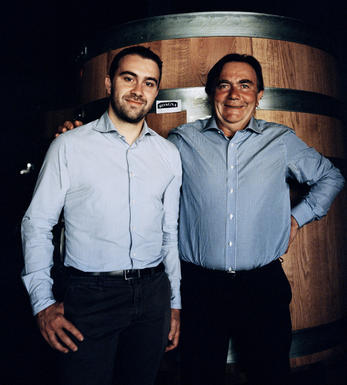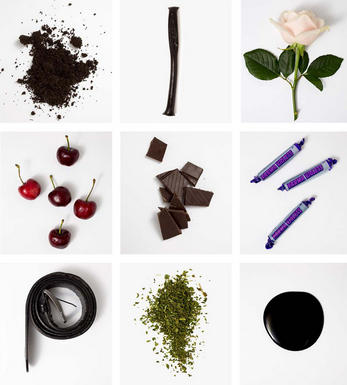
Critics reviews
Today, the 2005 Paje looks to be a relatively early maturing wine for Roagna, which is not necessarily a bad thing given the estate’s reputation for making wines that take an eternity to peak. Anticipated maturity: 2015-2025.
You never know what to expect from Luca Roagna. That is one of the reasons a visit can’t possibly be boring, there are just too many new things to absorb with seemingly every tasting. Some things don’t change, however, including a decidedly traditional approach to vineyard work and winemaking which emphasizes late harvests, the use of natural yeasts and extended barrel aging.
(Antonio Galloni - Wine Advocate #197 Oct 2011)
About this WINE

Roagna, Piedmont
Luca Roagna represents the latest generation to work in this historical wine estate, alongside his genial father Alfredo, whose 15 hectares of vine cover both Barbaresco and Barolo wine production. However the family's roots lie in Barbaresco, with Luca's grandfather buying the Paje vineyard in the 1950s.
The key to understanding Roagna's wine is their insistence upon biodiverse masale selected and old vineyards (up to 100 year-old in the case of Castiglione Falletto), whose plants are only green harvested up to 15 yo (older vines set their own yields naturally). Harvests tend to be more protracted than their neighbours, while cuvaisons in large conical French Garbellotto botte also outstrip the norm, lasting anything from one to two months, achieving the finest tannins and maximum extraction. The use of sulphur dioxide is minimal if applied at regular intervals.
The range is dominated by three Barbaresco crus: Paje, Crichet Paje and Paje Riserva; the difference being the exposition and vine age. Not afraid to innovate, since 1982 they have also offered an ingenious non-vintage, vino di tavola blend of (Barbaresco) Nebbiolo called 'Opera Prima' and since '88 a minerally white Chardonnay/Nebbiolo blend named 'Solea'.
From Barolo's Castiglione Falletto village comes their monopole and ancient vine 'La Rocca e Le Pira' cru, while more recently (from '93) comes Serralunga d'Alba's prime Vigna Rionda. Production is small; the 10,000 cases potential reduced to an average 6,000 case reality. In a word: finezza.

Nebbiolo
Nebbiolo is the grape behind the Barolo and Barbaresco wines and is hardly ever seen outside the confines of Piedmont. It takes its name from "nebbia" which is Italian for fog, a frequent phenomenon in the region.
A notoriously pernickety grape, it requires sheltered south-facing sites and performs best on the well-drained calcareous marls to the north and south of Alba in the DOCG zones of Barbaresco and Barolo.
Langhe Nebbiolo is effectively the ‘second wine’ of Piedmont’s great Barolo & Barbarescos. This DOC is the only way Langhe producers can declassify their Barolo or Barbaresco fruit or wines to make an early-drinking style. Unlike Nebbiolo d’Alba, Langhe Nebbiolo can be cut with 15% other red indigenous varieties, such as Barbera or Dolcetto.
Nebbiolo flowers early and ripens late, so a long hang time, producing high levels of sugar, acidity and tannins; the challenge being to harvest the fruit with these three elements ripe and in balance. The best Barolos and Barbarescos are perfumed with aromas of tar, rose, mint, chocolate, liquorice and truffles. They age brilliantly and the very best need ten years to show at their best.



Buying options
Add to wishlist
Description
Too many (journalists) flocked after the bigger, easier 2004 or the great 2006, overlooking the subtle prettiness of the 2005! Luca’s captured the understated charm of this less-obvious year with his single vineyard Paje Barbaresco. Paje’s a nursery of biodiversity, the vines left to self-regulate.
The purity of fruit delivered into the bottle through gentle vinfication only in large oak; this is a pretty wine garlanded with bags of tiny red fruit, with such silky texture grounded by a salty (salato) note. Could be drunk now but I’d prefer to wait a couple of years, say from 2014 onwards. Bravo Luca!
(David Berry Green)
wine at a glance
Delivery and quality guarantee